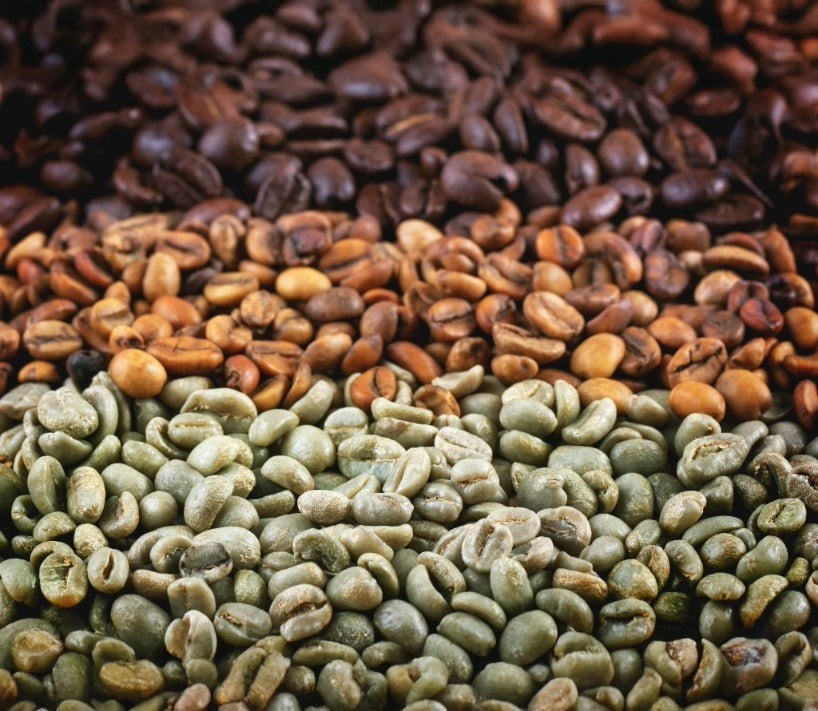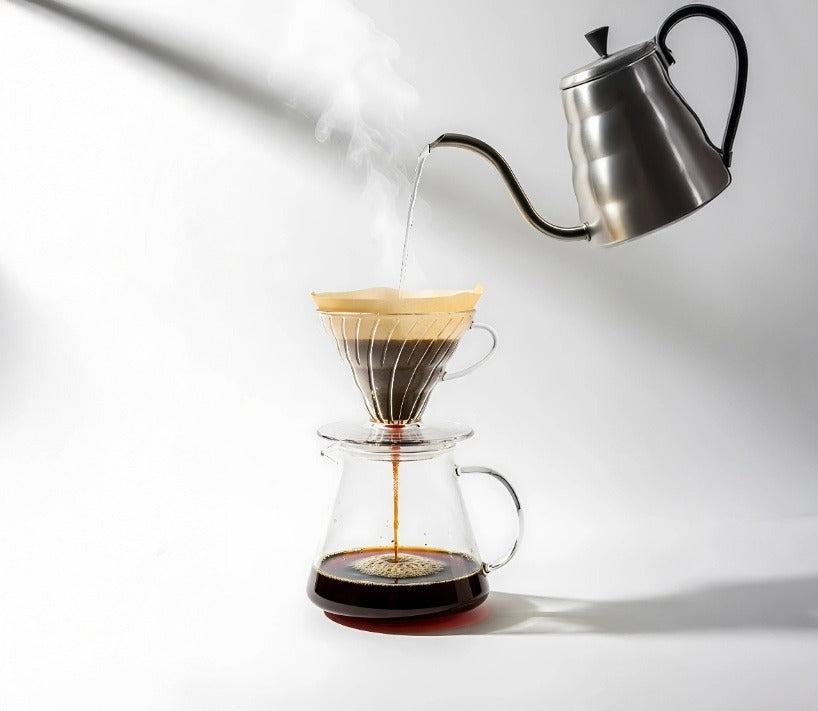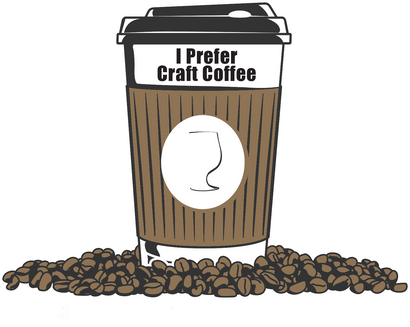Best Coffee Bean Delivery Best Coffee Bean Delivery: The Not-So-Sweet Truth Behind Discounted Beans
July 06, 2025 5 min read
Best Coffee Bean Delivery: The Not-So-Sweet Truth Behind Discounted Beans (and How to Dodge a Bitter Brew)
“Ever found yourself elbow-deep in the grocery clearance bin like a caffeinated raccoon?”
I’ll confess: even as the roaster behind a best coffee bean delivery service (and a guy who smells like warm Guatemalan chocolate 90% of the day), I’ve rummaged for markdown stickers. Why? Because coffee prices have climbed steeper than my kayak up the Delaware River after leg day. Cheap retail ground now averages $7 a pound in the U.S., up from $4 back in 2020—a 75% jump that makes even loyal espresso drinkers blink into their mugs. washingtonpost.com
So, let’s unpack why otherwise flavor-obsessed humans willingly — even eagerly — buy discounted coffee beans.
The Ugly Truth Behind Discounted Coffee
1. Age Isn’t Just a Number—It’s a Flavor Assassin
“Discount” usually translates to “we need to move this now before it fossilizes.” Coffee reaches peak aromatics 2–14 days after roasting; beyond a month, flavor compounds oxidize and the once dynamic acids flatline. By 90 days? RIP complexity. Yet old inventory is exactly what’s slashed in price and slapped with a—dare I say—deceptive shiny sticker.
2. Defects in Disguise
Green coffee defects (insect damage, mold, quakers, black beans) lower lot prices at origin. Roasters chasing rock-bottom costs happily snap them up, roast dark to hide flaws, then discount hard to move volume. Your tongue, however, can’t be fooled: rancid peanuts, ash, or a rubbery twang are red flags you’re sipping imperfect beans.
3. Roaster Skill Matters (Spoiler: “Discount” Often Equals “Didn’t Learn Physics”)
Dialing in roast curves demands time, science, and palate calibration. Discount-driven operations often push massive batch sizes with little QC, resulting in uneven development. One bean is baked, the next is underdeveloped, and the rest taste like “meh.” Cue unimpressed customers loading their mugs with extra sugar—and ultimately blaming coffee rather than roaster.
🎯 Comparison Table: Discounted Beans vs. Quality Delivery
| Factor | Discount Bin Beans | Fresh Beans via Best Coffee Bean Delivery |
|---|---|---|
| Roast Date Visibility | Frequently missing or vague | Printed roast date, often roasted to order |
| Bean Age When You Brew | 30–180 days old (yikes) | 3–14 days old (peak flavor window) |
| Defect Rate | High (B- and C-grade lots) | Low (graded specialty lots) |
| Flavor Profile | Flat or harsh; inconsistent | Vibrant, nuanced, repeatable |
| Transparency & Education | “Trust us, it’s on sale!” | Traceable origin details, brewing tips |
| Average Cost per Brew | $0.40 (but you double the scoops) | $0.55 (but you savor every sip) |
| Satisfaction Level | Buyer’s remorse | “Why did I ever drink stale coffee?” |
Yes—fresh quality costs a few cents more per cup, yet you waste less coffee, need fewer add-ins, and actually enjoy the ritual. That, friends, is value.
How to Score Fresh Beans and Protect Your Wallet
Okay, you get it: cheap beans can sabotage flavor. But nobody wants a second mortgage to fund a caffeine habit. Here’s my three-step “flavor without bankruptcy” game plan:
-
Interrogate the Roast Date
-
When exploring the best coffee to buy online, look for roasters who front-print roast dates and ship within 24 hours. No date? Hard pass.
-
Reminder: your taste buds don’t lie. If a site brags about expiration instead of roast dates, that’s a red flag the size of a venti cup.
-
-
Understand Grading & Defects
-
Specialty lots are graded 80+ by the SCA, containing few defects. Commodity coffee isn’t.
-
When a deal seems unreal, scan the description. Words like “premium blend” with zero farm info often translate to “we blended out the defects.”
-
-
Leverage Subscriptions & Free Shipping Perks
-
The best coffee subscription online models ship freshly roasted beans on a cadence you choose—often bundled with best coffee online free shipping.
-
Subscriptions flatten costs (fewer impulse buys, no popcorn-scented grocery aisles) and guarantee freshness. Your future self will thank you.
-
-
Sample Strategically, Not Randomly
-
Many roasters (the reputable ones) sell small sampler packs. Use them to find your best craft coffee at home fit—without ending up with a pound of regret.
-
Make notes. Compare origins, processes, roast levels. Congrats, you’re now the “coffee nerd” at brunch.
-
-
Track Your Brew Variables
-
Stale beans often masquerade as “my grinder’s fault.” Keep variables consistent—grind, ratio, water temp—so you can isolate bean freshness as the flavor hero or villain.
-
Share findings. Coffee geeks on Reddit will shower you with upvotes (and more brewing tips).
-
Quick Cheatsheet
-
Freshness window: 2–30 days post roast for most brew methods, up to 60 days for espresso.
-
Buy 1–2 weeks ahead of consumption, not months.
-
Store in airtight, opaque containers—sunlight and oxygen are silent bean assassins.
Follow these moves and you’ll sip the freshest craft coffee online without needing a loan officer.
Bonus Nuggets the Discount Bin Won’t Tell You 🔍
-
Price ≠ Quality (in either direction). Some boutique roasters over-charge; some “value” producers punch above their weight. Vet by transparency, not MSRP.
-
Whole Bean > Pre-Ground. Oxidation races once beans are ground. Grinding at home locks in more aromatics—especially with fresh deliveries.
-
Roast Level Isn’t a Band-Aid. Dark roasts can mask minor defects but can’t resurrect garbage beans. A smoky cup isn’t automatically “quality.”
-
Certifications Matter, Except When They Don’t. Fairtrade, Organic, etc., address ethics and farming inputs—not roast skill or freshness. Nice, but not the whole picture.
Frequently Asked Questions
Q1: Why are discounted coffee beans often stale?
Because retailers need to clear slow-moving inventory. Coffee is perishable; the longer it sits, the flatter it tastes—so they slash prices to recoup costs.
Q2: How can I tell if beans are fresh when buying online?
Look for a clearly printed roast date and shipping window. Fresh production + prompt shipping = flavorful brews.
Q3: Do higher prices always mean better beans?
Nope. Evaluate transparency (origin, process, roast profile) and freshness guarantees—not just the price tag.
Q4: What defines the best coffee bean delivery service?
Reliable roast-date transparency, fast shipping, specialty-grade sourcing, and educational resources so you brew confidently at home.
Q5: Are subscriptions worth it for casual drinkers?
If you consume coffee weekly, subscriptions save you from emergency grocery runs and keep beans within prime freshness—making them a cost-effective, flavorful choice.
The Takeaway—Choose Value, Not Just “Cheap”
Buying cut-rate coffee is like buying discount sushi at the gas station: technically edible, morally questionable. With a little homework, you can snag top specialty coffee online that’s fresh, defect-free, and roasted by folks who actually studied a roasting curve—often with cool perks like free shipping or sampler upgrades.
Remember: the next time you’re tempted by a bright yellow clearance tag, ask yourself, “Is this saving me money…or costing me flavor?” Spend smart, brew smarter, and let every cup remind you why coffee became the world’s favorite bean juice in the first place.
Happy caffeinating—minus the buyer’s remorse.
Also in Best Coffee To Buy Online Education

Order Freshly Roasted Coffee Beans Online (And Take Control of Flavor)
January 04, 2026 3 min read
Order freshly roasted coffee beans online and control flavor at home. Get better coffee with fresh roasted coffee beans online.

Best Craft Coffee To Brew At Home (Without Guessing)
January 03, 2026 3 min read
A simple, humorous guide explaining why high-scoring specialty coffee is the key to brewing the best craft coffee at home without guesswork.

Biggest Mistake With Pourover Coffee: It's Your Beans
January 02, 2026 3 min read
Learn how to brew the best pourover coffee at home with the best tasting craft coffee online. Remember, the best coffee to drink at home starts with the freshest craft coffee online, not the bargain bin beans at your local supermarket.
